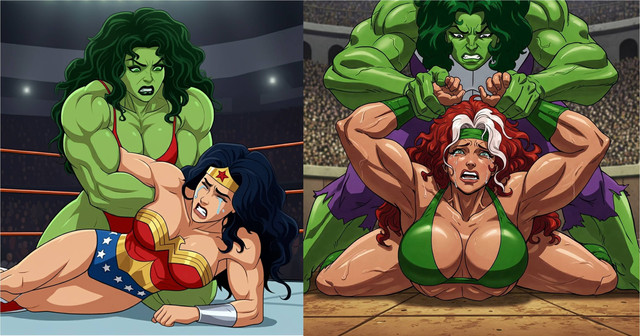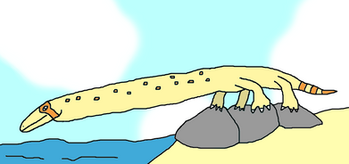HOME | DD
 Tarturus — Mini Crocs
Tarturus — Mini Crocs

#crocodile #crocodiles #desert #evolution #future #miniature #speculative #tarturus #speculativeevolution #speculativebiology #speculativezoology
Published: 2016-04-07 05:58:02 +0000 UTC; Views: 1494; Favourites: 4; Downloads: 4
Redirect to original
Description
I've never entered any of the Speculative Evolution forum's competitions before, but there's a first time for everything and I reckoned it could be interesting. Here is my entry for COM #66: Downsizing: s1.zetaboards.com/Conceptual_E…And here is the description:
Picture the following scene. A desert 300 million years in the future. The location is part of what used to be Africa though the configuration of Earth's land masses has changed so much over the ages that the old geography of the Holocene no longer has much meaning. Many weird and wonderful creatures inhabit the desert, but we shall focus on only one particular group.
In the daytime you may spot small creatures that you could be forgiven for mistaking for lizards. But closer inspection reveals them to be something entirely different. These are in fact tiny crocodiles.
The "mini crocs" are a group of dozens of different species of terrestrial crocodiles that range from 5 to 20 cm in length and come in a range of different colours, including green, blue, red, orange, yellow, brown and grey. Unlike the splayed legs of a lizard, a mini croc's legs are pillar erect. Their backs still have small scutes, vestiges of the armoured backs of their distant ancestors. Unlike the large aquatic predators they descend from, mini crocs inhabit arid terrestrial environments and hunt small creatures like insects, spiders and scorpions. During the daytime they can be found hunting, interacting with other mini crocs or sunning themselves on rocks. During the night they take refuge in small burrows they dig in the sand or soil. It is in these burrows where the females lay their eggs, of which there are about 6 to 12, incubated in dry vegetation collected from desert plants.
To know how big aquatic predators left tiny terrestrial descendants, we have to go back around 100 million years earlier, when all the continents were merged into the single landmass New Pangea (or Novopangea, depending on what name you prefer). Vast desert regions formed across the land and many water bodies dried up. Aquatic crocodilians living in the wetter regions retained their aquatic nature, while some in the regions of receding water became terrestrial hunters, a role crocodilians had played before in Earth's history on many occasions. There was, however, one group of aquatic crocodile adapted by reducing in size. Smaller crocs required less space and food and smaller prey was more readily available than large creatures and thus natural selection favoured these smaller crocodiles in the ever shrinking water bodies. Eventually, some of these water bodies dried up completely though, and the small aquatic crocodiles evolved into small terrestrial crocodiles (well, those that did not die out at least).
Later, New Pangea broke apart and new biomes formed on the different new land masses, but the tiny desert dwelling mini crocs remain to this day. They are currently doing quite well for themselves and will presumably continue on far into the future, perhaps even all the way up until the Earth becomes too harsh to sustain any terrestrial vertebrate.























